




| White Wagtail (Motacilla alba (Linnaeus, 1758)) |





|
|
Scientific name: Motacilla alba (Linnaeus, 1758) Common name: White Wagtail French name: Bergeronnette grise Order: Passeriformes Family: Motacillidae Size: Body size: 18 cm; Weight: 23 g; Wingspan: 31 cm. Habitat: Open areas with low vegetation with a preference for places near water. Road sides, parks and gardens. Food: Insectivorous. The White Wagtail catches insects during flight or on the ground. Nesting: The White Wagtail builds a nest in a hole in a cliff, in an old wall or in a wood heap. There are 2 or 3 broods of 3 to 5 eggs between April and August. Migration: Partially migratory. Many European birds move towards the Mediterranean area in winter. Some of them fly south to Central Africa. Geographic area: Europe, Asia, North Africa and Central Africa, North America and Central America. |
The White Wagtail has a black cap and a black throat contrasting from a white background colour. The upper side is grey and the under side is white. The wings are black with white stripes. The tail is long and black with white edges. females are a duller colour than males. Juveniles are brownish. There are many subspecies which differ from the common European form Motacilla alba alba. You can see the Motacilla alba yarrellii subspecies on the British Isles and on the facing continental coastal areas. The upper side is black. You can see the Motacilla alba subpersonata subspecies in Morocco. It has larger black marks on the head. |
| [To know more about the White Wagtail] [Next picture] [Top] |
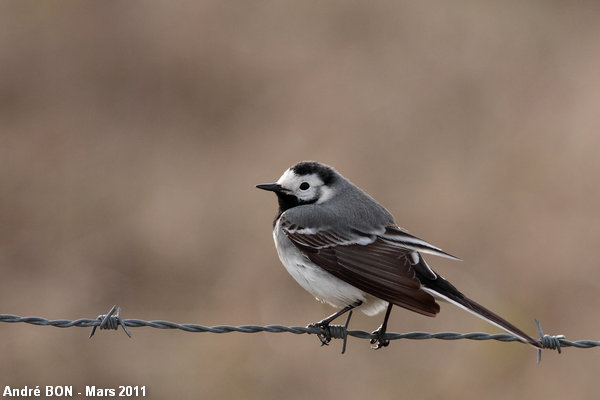
|
A car is an excellent hide for wildlife photography. I was sheltering from rain inside my car when this kind White Wagtail came to land very close from me. |
| [To know more about the White Wagtail] [Next picture] [Previous picture] [Top] |
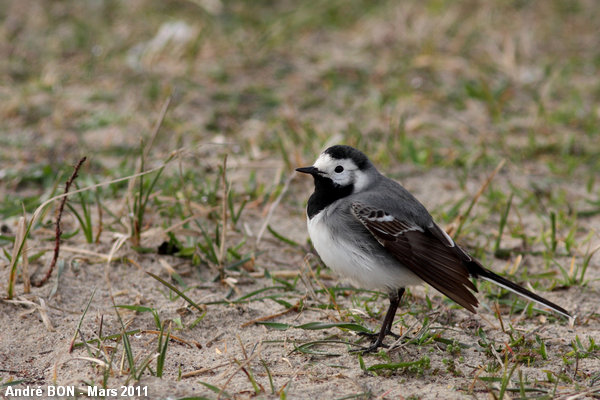
|
Here is a White Wagtail in a more natural environment, that's to say the dune vegetation of the Duinen van Texel National Park. I should rather say the vegetation bordering the parking lot as the access to the dune area is totally forbidden from March 1st to August 15th. It is good to note that the protection of nesting sites has been considered as a priority over all other possible activities. |
| [To know more about the White Wagtail] [Next picture] [Previous picture] [Top] |
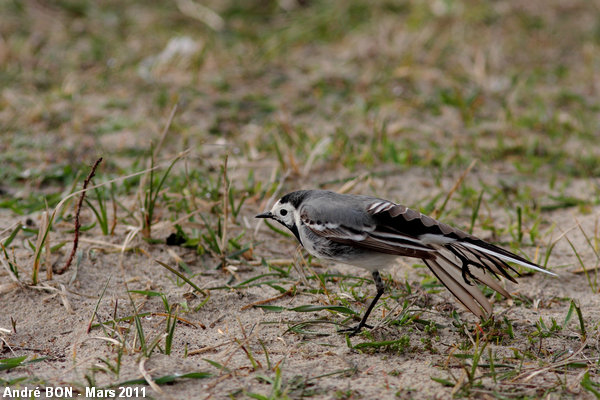
|
It is common to observe White Wagtails stretching their wings. Here is an additional example. |
| [To know more about the White Wagtail] [Next picture] [Previous picture] [Top] |
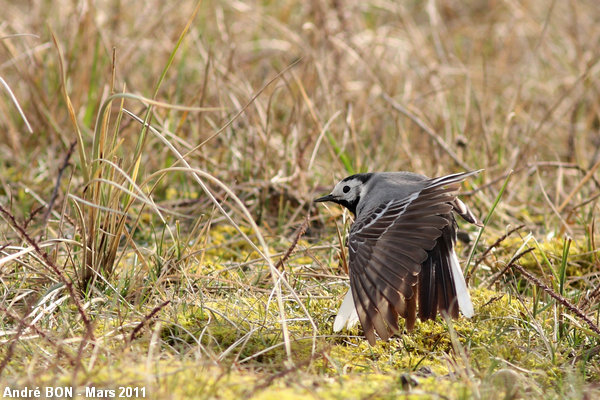
|
Gymnastics and stretching are going on. |
| [To know more about the White Wagtail] [Previous picture] [Top] |
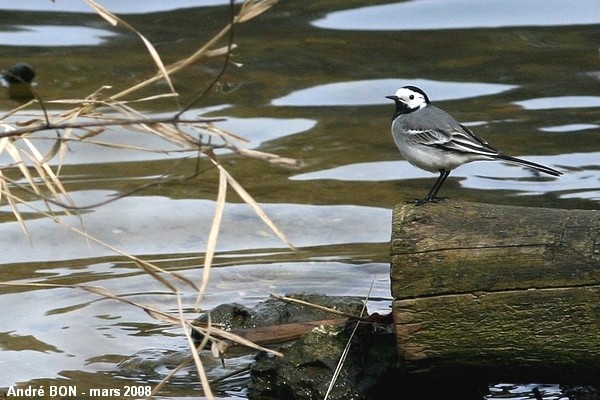
|
Water edges are good places to find insects, that's why you often observe White wagtails there. In 2008, I have only observed White Wagtails during a very short time period. Were these White Wagtails just migratory birds passing or did they better hide inside the vegetation after? |